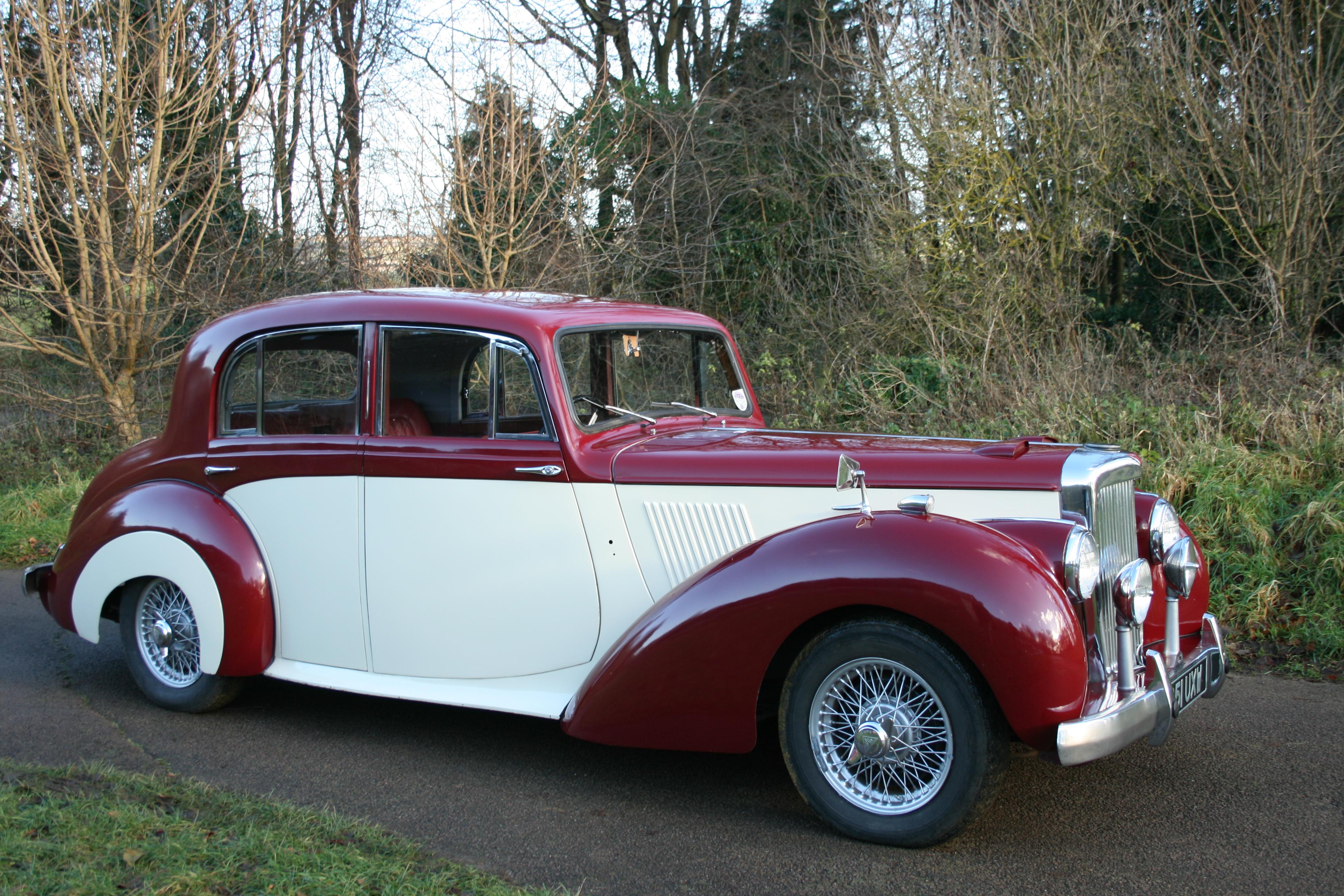-
Insurance
InsuranceAbout our productsLearn about insuringGet a quote Get current values, historical values, model history and more.
-
Valuation
ValuationHagerty valuation toolLook up a vehicle value Get current values, historical values, model history and more.
-
Events
EventsHagerty official eventsHagerty ClubhouseEvent calendar
-
Entertainment
EntertainmentMore to explore
- Portal login
1953 Alvis TC21/100
Grey Lady Saloon 3 L
Vehicle values by condition
Fair
Condition 4
£13,700
#4 cars are daily drivers, with flaws visible to the naked eye. The chrome might have pitting or scratches, the windshield might be chipped.
Good
Condition 3
£20,000
#3 cars could possess some, but not all of the issues of a #4 car, but they will be balanced by other factors such as a fresh paint job or a new, correct interior.
Excellent
Condition 2
£31,000
#2 cars could win a local or regional show. They can be former #1 cars that have been driven or have aged. Seasoned observers will have to look closely for flaws.
Concours
Condition 1
£48,200
#1 vehicles are the best in the world. The visual image is of the best car, unmodified, in the right colours, driving onto the lawn at the finest concours.
Insurance premium for a
1953 Alvis TC21/100 Grey Lady Saloon 2993
valued at £20,000
£150.96
/ year*
History of the 1953 - 1955 Alvis TC21/100

1953 - 1955 Alvis TC21/100
When Alvis was forced to cancel the Alec Issigonis-designed TA350 project on the grounds of cost, they updated the TA series as the TC. The chassis, Lockheed drum brakes, independent front coil springs, Girling telescopic shock absorbers and rear leaf springs remained the same, but the 2,993cc I-6 OHV engine had an improved cylinder head, and twin SU carburettors. Power was increased to 93bhp.
Alvis launched the TC21 at the 1953 Earls Court Motor Show and, as with the TA21, the saloon coachwork was by Mulliner and the drophead coupes were by Tickford. The price of the former was £1,721 19s 1d, and the latter was £1,878 4s 2d. However, the attention of most sporting chaps was taken with the TC21/100 ‘Grey Lady’ saloon (a name bestowed by the press rather than the factory) version, which boasted a higher compression ratio, a power output of 100bhp and a top speed of 100 mph. The bonnet had louvres to facilitate extra cooling, and the standard equipment included fog and spot lamps, a heater and a sliding roof. Wire wheels were an attractive option and the Grey Lady cost £1,821 10s 10d.
A Tickford bodied Grey Lady drophead was offered from March 1954 onwards, and Grey Lady production ceased in December 1955 after 452 saloons and 100 drophead coupes. Two months earlier the future of the marque was shown at the Paris Motor Show in the form of the TC21 bodied by Carrosserie Graber, and this would eventually be marketed as the TC 108G.
Power for the Grey Lady was from Alvis’ famed 3-litre engine, and the standard transmission was the factory designed 4-speed box as found on the TA. An experimental ‘Manumatic’ Grey Lady was owned by Douglas Bader.
The era of the gentleman’s touring saloon was fast coming to an end by the mid-1950s, and the Grey Lady is one of the finest exponents of the breed, cruising with dignity while benefitting from road manners that are superior to many cars ten years its junior.
One major issue can be chassis rust; pay attention to the area behind the exhaust silencers, the inner nearside member, and the box section side members. The boot floor is another vulnerable point, and worn kingpins are not uncommon. The engine can be prone to overheating, but the Alvis Owners’ Club can advise re spares.
The Alvis TC is the last ‘traditionally styled’ Alvis and in both saloon and drophead forms it positively defines the term ‘raffish’; upmarket but never pompous and with a rarely equalled standard of workmanship.
Rivals to the Alvis included the Lagonda 3 Litre, the Bentley R-Type, the Lea Francis 18 and the Armstrong Siddeley Sapphire 346.
Hagerty Newsletter
Get your weekly dose of car news from Hagerty UK in your inbox

ADVERTISEMENT